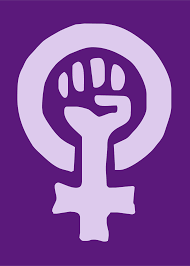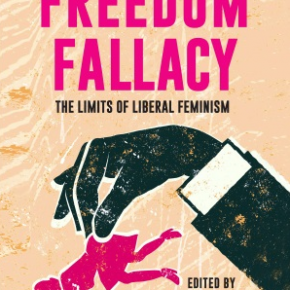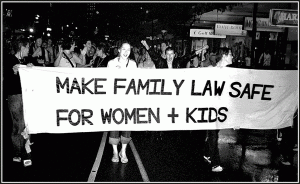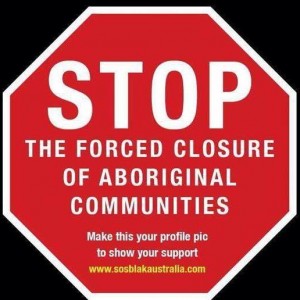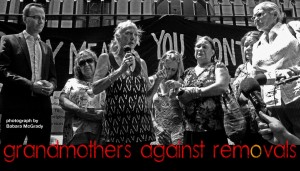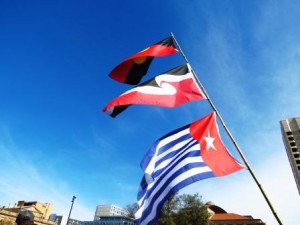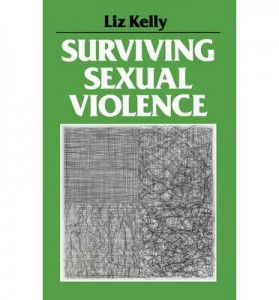I am Woman Hear Me Roar
Helen Reddy sang this song in the 1970’s and it became an anthem for Women’s Liberation.
I sang it loudly and proudly. I was a University student in the early ‘70’s and I was just beginning to learn about Women’s Liberation. I cannot say that I was part of the so-called ‘Second Wave’ of feminism. I was not actually involved in the movement. But I was inspired by it and benefited from it.
It enabled me to reject the notion of becoming a wife, mother and housewife and to recognise that I could have a career.
It wasn’t until I began working in the field of social work that I began to realise that women’s liberation meant more than achieving equality and individual choices. This was when I began to learn about the true extent of male violence against women and children – child sexual abuse, domestic violence, rape, and sexual harassment. I learnt this through talking to and working with women and children who had been traumatised and victimised by male violence – their lived experiences of surviving in a patriarchal world.
So began my quest to learn as much as I could about women’s experiences in this patriarchal world. My feminist education began – and continues.
Now in my sixties and I read about the attempt to no-platform Germaine Greer.
“no platforming” is a rather modern phrase which is “… where someone is removed from the list of speakers at an event because someone else has objected to what they might say or what they have said in the past.” Jean Hatchet
This was an attempt to stop Germaine Greer from speaking to Cardiff University students on Women and Power. And it was trans-activists who were attempting to silence her.
Does it seem strange to anyone that men who claim they are women are silencing a woman for a talk on woman and power? Sounds like male privilege is at work here.
What concerns me in the fanfare about this on social media has been the criticism of Germaine Greer because she is “an older woman”, “past her time”, a “second-wave” feminist.
Meghan Murphy has written eloquently about the ageism and sexism inherent in these critiques.
“Stereotypes about second wave feminists abound — they are “stuck in the past,” “anti-sex,” dowdy, no-fun bra-burners. “That’s so second-wave” is not perceived as a compliment among many younger feminists. The problem with these sweeping accusations is not just that they are untrue, but that they are sexist.”Kicking against our foremothers: does feminism have an ageism problem?
One of the important things that I have learnt in my feminist journey is the importance of women’s history. I have written about this before on this blog.
“I have become extremely interested in learning about women’s history since I discovered Gerda Lerner’s work on women’s history. Her books ‘The Creation of Patriarchy’ and ‘The Creation of Feminist Consciousness’ are ground-breaking in their analysis of women throughout Western history.
She documents how throughout history women have been present, have contributed to the development of society and have challenged their restricted roles in society.
They have written and fought for women to have a voice. However, their voices have been silenced, ignored and unrecorded.
She argues that women have been denied knowledge of their own history.
This lack of awareness of our struggles and achievements – and exclusion from theoretical thoughts and ideas – has maintained the subordination of women in patriarchy.
This has resulted in women being alienated from their own collective experience.
She outlines how women can be shown to have, throughout generations, developed intellectual thought and ideas and resisted the constraints of patriarchy.”
Gerda Lerner was instrumental in the development of women’s history and Women’s studies in Universities in the United States.
Sadly such courses have now been relegated to “Gender Studies” and the idea of teaching women’s history and feminism seems to be rapidly disappearing.
I don’t have much time for the concept of waves of feminism. It appears to me, as argued by Gerda Lerner, that throughout history there have been women challenging patriarchy and the constraints placed on women by patriarchy.
It also seems to me that those young women today who reject ‘second-wave’ feminists, who focus on individual choice/empowerment and who reject the theoretical feminist analysis that comes before them have in fact been captured by patriarchy.
“What depresses radical feminists (don’t get scared of that word – it just means “root” as in “getting to the root of the problem”) is that young feminists are being force fed a version of feminism that is shaped and defined by men.” Jean Hatchet
It suits patriarchy very well to denounce and ridicule the ideology of radical feminism; to create divisions within feminism and to alienate us once again from our own history.
It is radical feminists who first challenged the notion of gender – how women and men are socialized in different ways such that men are the oppressors and women are the oppressed.
Simone de Beauvoir said it very succinctly
“One is not born a woman, one becomes one.”
I don’t agree with everything that Germaine Greer says or does. I don’t have to. But we must be able to have serious, critical discussions about gender and what it means to be a woman, in safe spaces.
Meghan Murphy cites Astrid Henry, the author of Not My Mother’s Sister: Generational Conflict and Third-Wave Feminism:
“There has never been just one kind of feminism that ‘gets it right’ and many of the same debates have always been present,” Henry says. When people make sweeping generalisations about the second wave, it erases the reality, diversity, and work of women who were there, as well as the lasting and immense impact they had on society.
“It ignores the huge range of feminism and feminisms that have existed for ages,” Henry says. “I can see why it’s effective to simplify history in that way, if it serves your purpose, but I think we should be more critical of that.”
Do not forget our history. Do not allow patriarchy to divide us. We must work together, collectively – to discuss, to argue, to find ways to dismantle patriarchy together.
Finn Mackay stated it very well in her closing speech at the Feminism in London conference:
“Women’s Liberation is serious, it is revolutionary, we are not tinkering around the edges here, we are not interested in leaving a brutal and backward system intact, we don’t want equality with inequality.
One of the ways we get there is through our own activism and through our activism together as women, is through women-only space. Because we are not our own worst enemy, because we are not each other’s enemies, because it is a lie that women cannot work together, one of the many lies told to hold us back. But we are not fools, we look through the herstory of our Movement and we know that women-only space is a tried and tested method of activism from which great ideas have grown. From small meetings in kitchens and playgroups and community centres sprung Women’s Aid, sprung Rape Crisis, and came the political theory which our Movement was built upon and still rests.”
Update
A very interesting article from Caroline Norma:
“This comparison of male hurt feelings with the violence, poverty, ridicule, disgust and social erasure that older women inevitably endure goes to the heart of the Left’s misogyny: never in history have we seen a broad-based progressive social movement dedicated to championing the rights of the group of human beings who are devalued in male sexual terms as no longer having perky breasts or youthful faces. Even though these women make up the most impoverished and despised of all social groups, Greer reminds us that we instead worry about hurting the feelings of men who embark on extreme feminine beauty practices, and champion them as “a better woman than someone who is just born a woman.” In other words, anyone is preferable to an old woman, even a man parading as one.
Transgenderism is not a political movement motivated by progressive concerns – it’s just the latest weapon in the Left’s covert battle against feminism. Women like Greer, Raymond, Jeffreys, Bindel and Brennan who authentically concern themselves with the condition of women at the bottom of the pile are the feminists being purged in the twenty-first century version of the Leftist wedge.”

